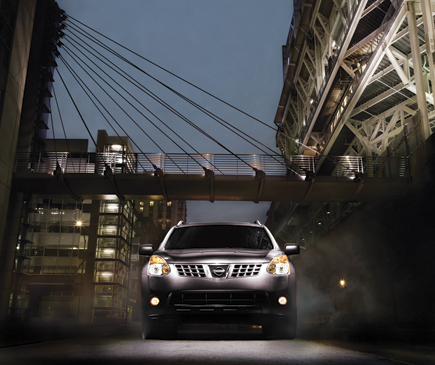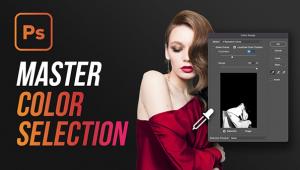Pro Choice; Cars With Style; The Photography Of Charles Hopkins Page 2
Taking The Show On The Road—Literally
Shooting a moving vehicle may involve any of several different strategies. “Advertising clients often prefer the car to appear tack-sharp in the shot, so you’d use a rig in that case,” Hopkins points out. The rig is attached to the vehicle being photographed, and the camera is planted atop this rig. The rig itself usually consists of a long, articulated arm attached and extending out from the undercarriage. It may be situated front or back, capturing a tight shot of the vehicle at a dynamic angle. Even when shooting with a rig, Hopkins works with the camera tethered to a computer. The computer sits on a rolling cart and travels in tandem with the vehicle, connected by cable (Wi-Fi is not used for security reasons, given that info on new car models is closely guarded).
A location service company handles transport of the vehicle to the location (or studio, if that’s the case), and they are also the ones who provide and attach a rig to the vehicle being photographed so that absolutely no damage is done (rig rental is negotiated in advance). And they detail and prep the car as needed. Photographers can also fashion their own rigs, which Hopkins has done in the past (but he recommends you enlist the services of a machine shop or garage). Either way, you may also have to add a couple of 15-lb sandbags on the rig arm to help dampen vibration. And expect to do some retouching, since the rig will likely get in the picture when shooting with a wide angle lens (a practical necessity).
As an alternative to the rig, albeit a less ideal solution, you can use a solidly constructed tripod with the necessary column extension and the camera sticking out a window of the car being photographed. In either case, you of course remotely trigger the camera. Toward that end, Hopkins uses PocketWizards.
Another approach is car-to-car shooting—from a vehicle trailing the automobile that you’re photographing. In this instance, you hand hold the camera. But you’ll also need a gyro stabilizer to prevent blur over bumpy roads. An Image-Stabilized lens helps, Hopkins adds, but it’s no substitute.
“While it looks as if the car is moving fast in tight action shots,” Hopkins points out, “actually the car is moving very, very slowly—no faster than I’d be moving on foot. And the exposures are quite long, perhaps as much as 8 or 10 seconds or more. The sharpness in the vehicle itself comes from the camera being attached to the rig, since camera and car are moving at the same speed.”
Nissan Rogue |
|
 |
|
|
Lighting A Moving Vehicle
You light a moving vehicle to match the shooting strategy you’re employing. “If we’re shooting car to car (from a flat-bed truck following at the same speed), typically we’ll mount Arri HMI lights (because they’re daylight-balanced) or Profoto power packs and strobes onto the flat-bed, and we’ll drive the lights with one Honda generator per light situated on the truck.”
On the other hand, where the camera is attached to a rig, you roll the car (literally pushing it, with the engine off to prevent vibration) through a bank of stationary lights on one or both sides of the road. In this scenario, the lights are also powered by generators. And there may be additional lights on rolling stands, with an assistant pushing them to track the car’s movements. Each approach gives you a different look and feel.
When shooting car to car, you get more blur and a greater sense of motion. “It gives you more of an editorial feel.” Hence, that’s the approach he’ll often take when shooting for a magazine. Shooting from a pursuing vehicle, Hopkins uses either the Canon or Hasselblad, operating the camera handheld for 1 or 2 seconds.
Shooting on location requires permits and a police presence to secure the area. One other thing you may need to do is hire a water truck, although this approach, like the once popular massive overhead light banks for studio shots, is less in vogue these days. “Typically, we use the water truck at night, because the water that the truck sprays on the asphalt adds reflections that fill in the empty space.” And Hopkins concludes: “The look the manufacturers are after changes over time. Who knows? Next year we could be rehiring those water trucks, reflecting yet another shift in temperament.”
- Log in or register to post comments

















































